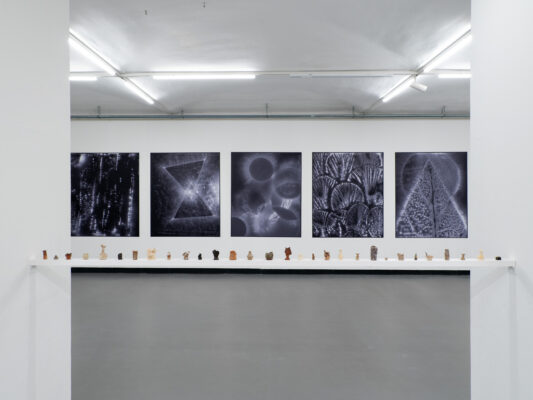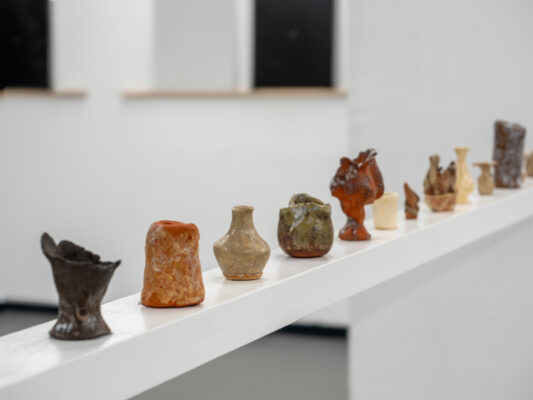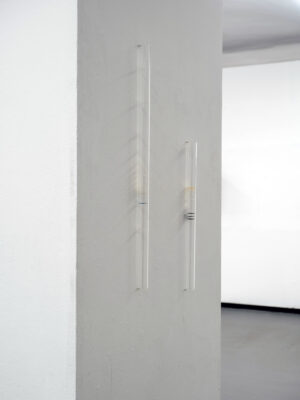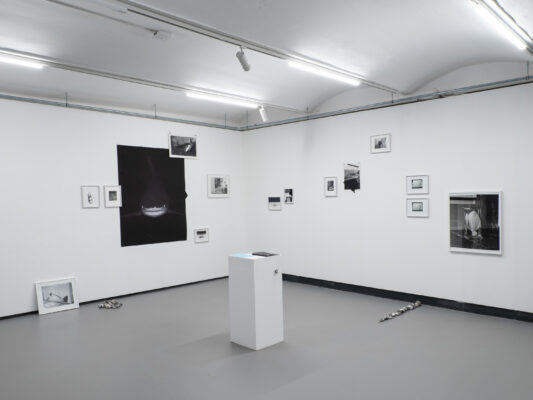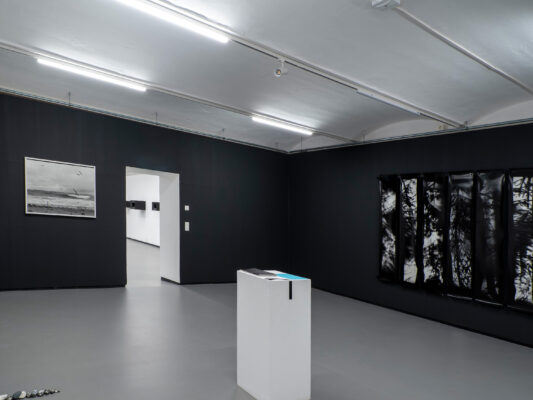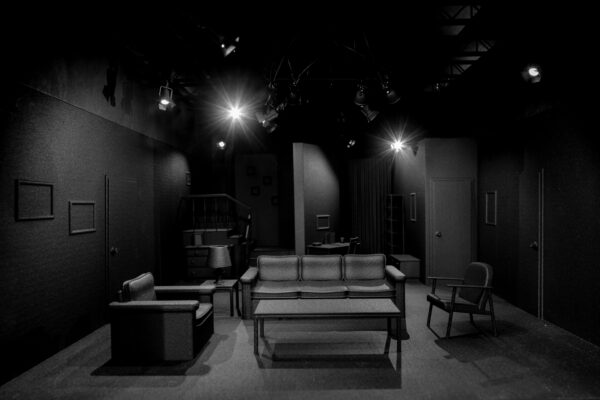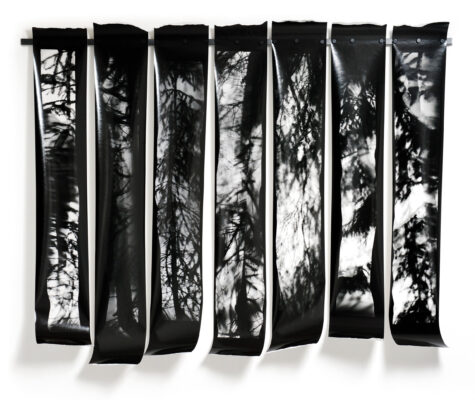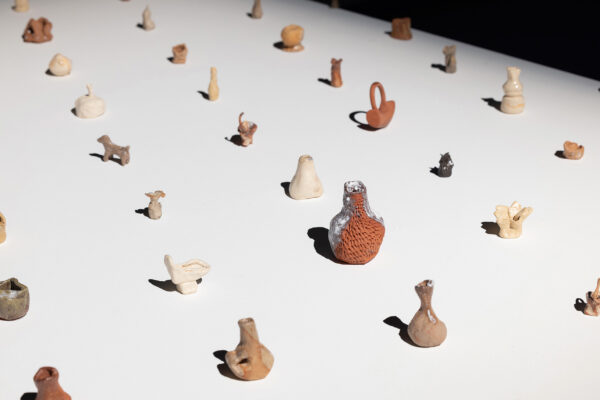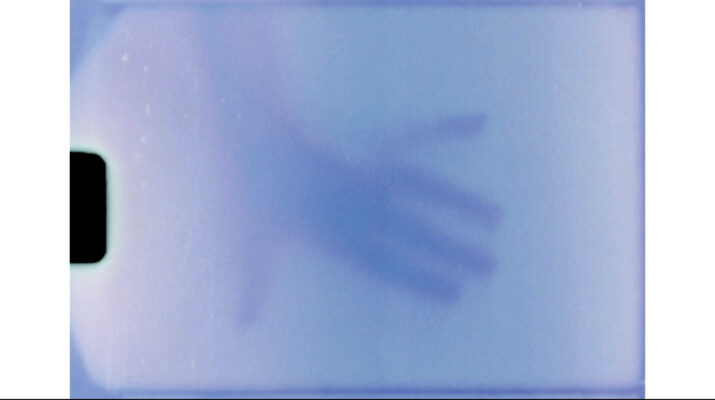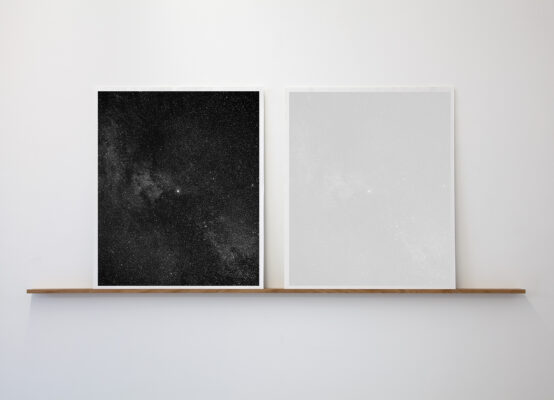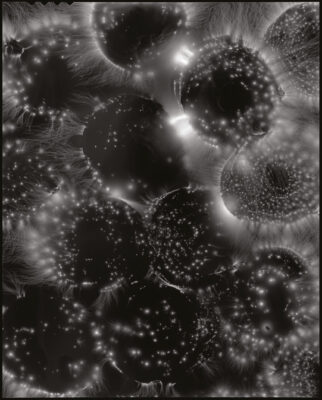Artist Talk: Sunday, June 1, 4 p.m.
Bernd Oppl, artist of the exhibition Über Nacht, in conversation with Petra Noll-Hammerstiel (in German). The talk with film screening takes place as part of the “Festival of independent art spaces in Vienna”.
“Night is the begin of the kingdom of uncertainty. Shadows become figures, thoughts become reality and time loses its firm contours” (Jorge Luis Borges). In the exhibition, Über Nacht, eight artists engage with the phenomena, emotional states and shifts of perception evoked by darkness and its opposite – light. In this transformative space fiction and reality, visibility and invisibility, menace and poetry collide. The artists have created works that make visible ephemeral processes, the unconscious, the mysterious and the intangible. In many of the works, memories and inklings that emerge from the unconscious play a major role. By experimenting with the mediums of photography and film, the artists succeed in their quests for innovative solutions based on specially developed procedures by which scientific phenomena such as light pollution are visualised or electricity is manifested as photograms. Or photographs are incinerated and the ashes worked into a ceramic glaze and a forest is turned into a photographer.
How reliably can photography visually document scientific phenomena? This is the question Francesco Del Conte askes in the context of light pollution. His series, Skyglow, consists of three pairs of images each showing a specific section of the night sky. The works reveal the visual effects of city lights on nature. At the same time the artist proposes new strategies of documentation. The experimental method he developed consists of photographing the same constellations from various locations with different degrees of light pollution. As reference stars he chose Deneb, Vega and Altair. Due to their luminosity and positional zenith these are also visible in areas where there is light pollution. The camera becomes a transcriber of light whose function becomes more than just exposing film. In the artist’s perspective, photography is no longer a tool for exploring the concepts of narrative and compositon but a carrier of valuable information independent of the author’s interpretations.
Johnny Linder’s works are visualisations of ephemeral processes that render changeable states, fragments of reality and intangible dynamics visible. In them, he often works with analogue photochemical processes or the gradual changes in materials whereby the performativity and reactive potential of these materials relate to his own body. Recurring themes in his concerns are body, insecurity and intimacy, instability, the qualities of touch as well as the meaning and transgression of images, layers and relationships. He is dedicated to the incomplete, the ambiguous and the transient. For example, Linder is showing the experimental film, Soft noise in darkness, about the state of mentally drifting: unbidden memories force their way into consciousness and evoke a nebulous feeling between intimacy and uncertainty. Shot on Super 8 film, the images were subjected to a chemical reaction as they were developed which caused a distinctive colour change.
In Bernd Oppl’s work space is manifested as miniature dioramas – intimate, stage-like wall displays that are invitations to peep, in-between places on a spectrum between closeness and distance. In this exhibition he is showing darkened interiors that exist inseparably from the various mediums they contain and which disappear as soon as these are no longer present. This includes model boxes with electronics and lights installed, such as Sleep Mode, a room with a bright “sleeping” laptop on a bed next to a pulsating light from a window, The rhythm of the night, a karaoke bar with flickering coloured disco lighting as well as I looked around the internet, a deserted internet café in which the computer monitors display a screensaver animation of a starry sky. The most recent work, I can’t see you laughing, shows a living room scenario reminiscent of a sitcom which lights up only when there is laughter. Otherwise there is just a deserted black stage.
Photo collages and barite prints of seascapes along with models of sea creatures and a twenty-two page artist’s book, all of which are from the eighteen part work complex, Night Dive, are being shown by Sandra Schubert. The subject of the work is the relationship of humans to nature. Here nature, in the form of the sea, is a screen on which fears and yearnings, representation or the reproduction of human imagination is projected. Animals become cultural objects. The individual images are held together by an integrated text of naïve omnipotence. “The reduced B&W shots appear objective and cryptic as if from an archive of uncanny memories.” (Katharina Bosse, 2023) On a formal level, the artwork is concerned with photographically reproduced images, their genesis and circulation.
Lachrymatory is part of a joint project by photographer Yuki Tawada and ceramic artist Fuku Fukumoto who have been working together as an artist duo since 2020. Their work began while attending courses at the Kyoto University of the Arts and is concerned with exploring the shared language and sensibilities of photography and ceramics while at the same time expanding the possibilities of each medium. Lachrymatory is an artwork that originated in a workshop where each participant brought a photograph and observed how it was transformed by burning. The resulting ashes were used in glazing a vessel for tears. When the piece was fired, the photo dissolved in the glaze. By transforming personal memories into a tangible form, the work questions the materiality of images and the ephemeral nature of memory.
For Dora Tishmann engaging with the Book of Genesis sparked an interest in light and its manifested phenomena, especially electricity in all its forms. This resulted in a photogram series, And there was light. She developed a procedure in the darkroom to direct electrical charges such as lightning onto plants, minerals, forms and objects. These ephemeral appearance was captured in photograms. The geometric forms outline the spatial nature of light and are reminiscent of the structure and forces of the universe. Bodies such as plants and minerals that can conduct electricity make it possible for her to reveal their cellular and molecular structure. The photograms unveil a hidden dimension to electrical light that is imperceptible to the human eye. This reveals a cosmic geometry in which the infinitely small and infinitely large co-exist and scales become entangled.
Stig Marlon Weston is showing silver gelatine contact prints from the series, Grove Trunks, that were made without the aid of a camera. Sensual and poetic, these black-and-white images of trees are simultaneously dark and threatening. Along the forest paths where, as a child, he created fantasy worlds, he now hangs long rolls of film on trees in the middle of the night and lets the forest to do his work. The results are life-sized contact prints. The tears and scratches are as much part of the images of the trees as the form and shadows they leave on the material. “And when I let the sites of memory pass before my eyes, I still find traces of trolls”.
Petra Noll-Hammerstiel








